The Ultimate Guide to Starting a Money Making Blog in 10 Steps
Today we’re going to talk about how to start a money making blog. It can be really exciting and rewarding, but also pretty overwhelming at first, so I’m going to walk you through it.
First you’re going to learn how to set up your blog for success, then we’ll go into the ways you can make money from it.
Just to warn you in advanced this is a technical process that takes a little time. I’ve seen other websites with titles like “how to start a blog in 10 minutes” and that is literally impossible.
You’re going to need at least an hour to set it up and start learning WordPress, but I’m going to walk you through each step and at the end you’ll have a shiny new blog.
Disclaimer: This post may contain affiliate links. Using them gives me a small commission at no additional cost to you. You can read my full disclosure here.
Table of Contents
Why start a blog?
People blog for different reasons, but most do it as a creative outlet or to share knowledge.
If you’ve visited my blog before you’ll notice that I post a lot about self improvement and empowerment, and that’s because I had felt lost for a long time and when I started to turn things around I felt really passionately about sharing what I had learned so that people like me could have better lives too.
When people get that excited about something they want to share it, and blogging is a great way to do that. And bonus, it can even become a steady source of income!
But Can You REALLY Make Money Blogging?
Yes you can! My blog is still a baby blog at just 7 months old, but I’ve still made some money. Not enough to live off of yet, but it grows every month.
Many blogs don’t start making a living income until 1-3 years in, so you do have to make a commitment but if you’re really passionate about your subject then why not?
Free vs Paid Hosting
If you don’t care about making money, then a free blogging platform like blogger.com or wordpress.com is totally fine. You’ll just have far more limitations with them and not really be able to monetize them. Ad and affiliate companies won’t accept you or work on those platforms.
If you are serious about wanting a money making blog now or you might want to monetize in the future, paid hosting is pretty much a necessity. There are a ton of options, but NameHero is popular among bloggers. It’s very important to chose a host that isn’t going to be crashing all the time, if your website is going down all the time you are losing money.
It’s also important to know that if your free hosting site dies, you lose all your content. If you are self hosted you can just move it to another host.
Ultimately a money making blog requires paid hosting.
Is Paid Hosting Expensive?
Hosting can vary in price, the general range I’ve seen is $4 to $15 a month.
Through my link NameHero is $3.49 a month. You can get 3 years of hosting for just $130.
That’s less than a coffee or a fast food run! You’ll be making far more than that within a few weeks or months.
Is Blogging Hard?
There is definitely a learning curve to the technical aspect of blogging. WordPress.org took me 2-3 days to figure out, but once you get it it’s pretty easy. It took a few more weeks of getting my site just right, but I’ve pretty much just been cruising along since then.
After that the real work is promoting your blog and consistently writing new content. Sometimes I have a week or two of not being inspired to write, and then I have really creative phases. You just have to have a positive mindset and be committed.
If you are ready to start a money making blog, follow the next steps!
How to Start a Money Making Blog:
Step 1: Pick a Niche
If you’re thinking of starting a blog you might already have an idea of what you want to write about. If not now is the time to start brainstorming. To have a money making blog you have to offer something to your viewers.
What are you passionate about?
How can you be of value to your audience?
What problems can you solve?
Some blogs just cover one topic, but it’s ok to have a few that are loosely related under one umbrella. As long as you are invested in it, you can make it work.
Step 2: Choose Your Blog Name
Then you’re going to want to choose a blog name and buy the domain (the url).
NameCheap is the best site to buy your website domain.
Please do not use GoDaddy to check if domains are available, they will ‘reserve’ any domain it thinks you’re interested in and force you to buy it from them for 10x the price.
Choosing a name was honestly the hardest part for me, it’s a big commitment!
You can always make it easy by using your name! Just make sure it’s fairly simple and easy for a reader to remember. Ideally you want a .com name, but .net and .co are ok too!
You also want to chose a name that’s available on the major social media platforms. If it’s taken you can always try yourname.blog or yourname.official. Initially apointoflight wasn’t available on Twitter but I just kept an eye on it and eventually it became free, so you can try stalking it too.
Step 3: Buy Hosting
Once you choose a name and buy the domain, it’s time to get hosting.
A self hosted website gives you unlimited customization, superior customer service, and faster website speeds.
Some hosting sites will let you buy a domain on their platform, but if you ever want to switch your hosting in the future (you probably will) it’s a good idea to have them separately. Again, I recommend NameCheap.
The cheaper ones are great when you don’t have a lot of traffic, but when you hit 100k a month you may want to upgrade.
I’ve used BlueHost and NameHero. BlueHost is generally cheaper, but when NameHero has sales you can get it at the same price (I got 3 years for $130).
My NameHero website is faster than my BlueHost, and speed is incredibly important because if your site is slow people will leave, so I recommend NameHero.
You can get started for $8.95 a month with the basic plan (which I have), but to get that price you do have to commit to 3 years. Initially that made me really nervous, but I knew that stepping out of my comfort zone would ultimately pay off and it has. I’ve already made back the money I spent on 3 years of hosting.
You can also do 12 or 24 months for slightly more if that makes you more comfortable but you’ll paid more.
To sign up you go to NameHero, select the Basic plan, select whether you’re buying a domain from them or using an existing one.

Then you select your package (Billing Cycle). You don’t need to add any extras, NameHero gives you a free SSL Certificate and that’s all you need.
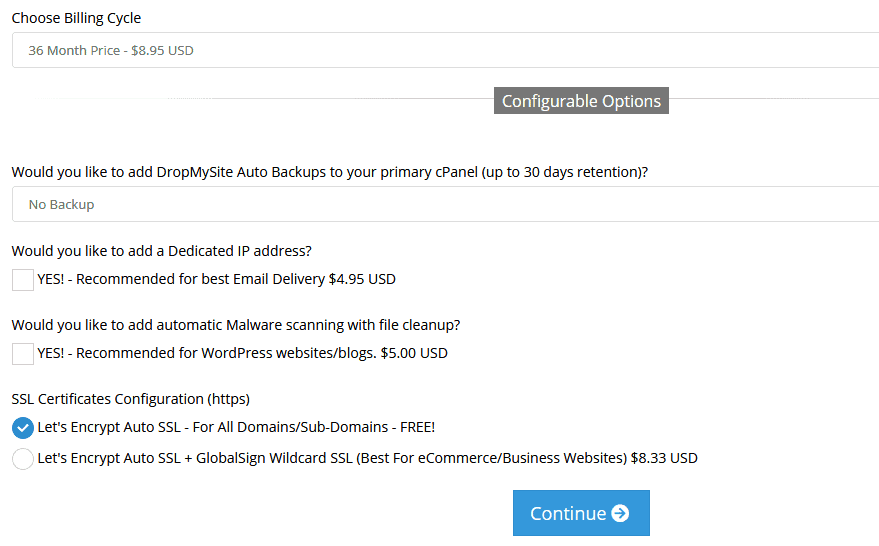
How to connect your domain to NameHero
Next you’ll need to connect your domain to NameHero.
Log into your NameHero account
Click Hosting and then My Services
Click on your hosting package
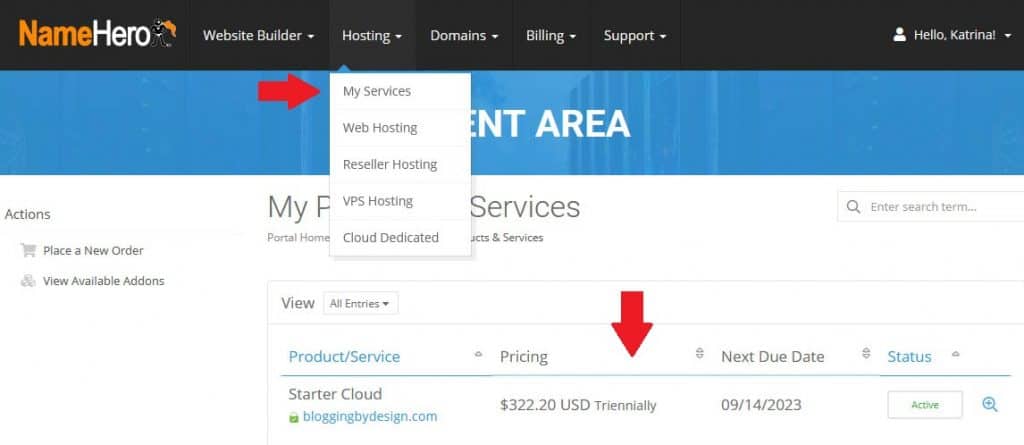
You’ll need to copy both your Nameserves into NameCheap
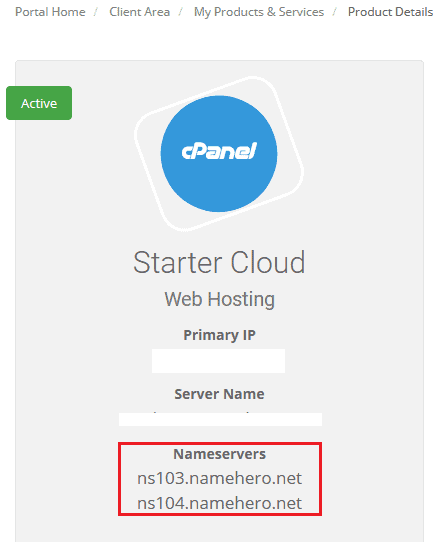
Log into your NameCheap account in another tab
Go to Domains and then Manage
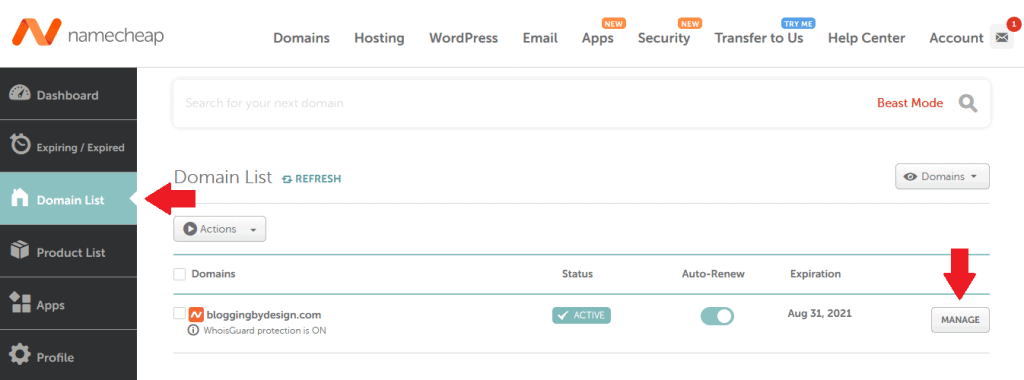
Then you’ll copy and paste your nameservers from NameHero into NameCheap. Click on the little green check mark to save.
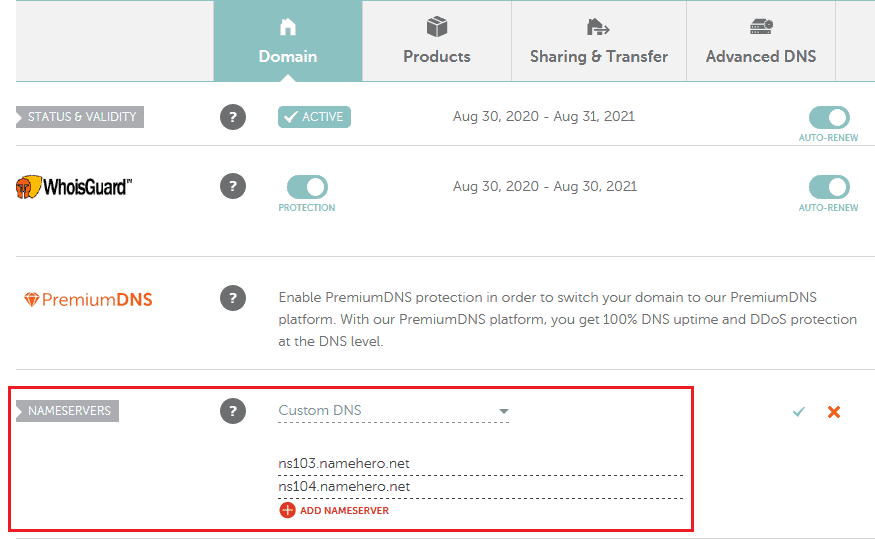
Step 4: Setting Up WordPress.
Next you’ll install WordPress.org.
In your NameHero account on the same page your nameservers are on you’ll see an option to Login to cPanel, click on that.
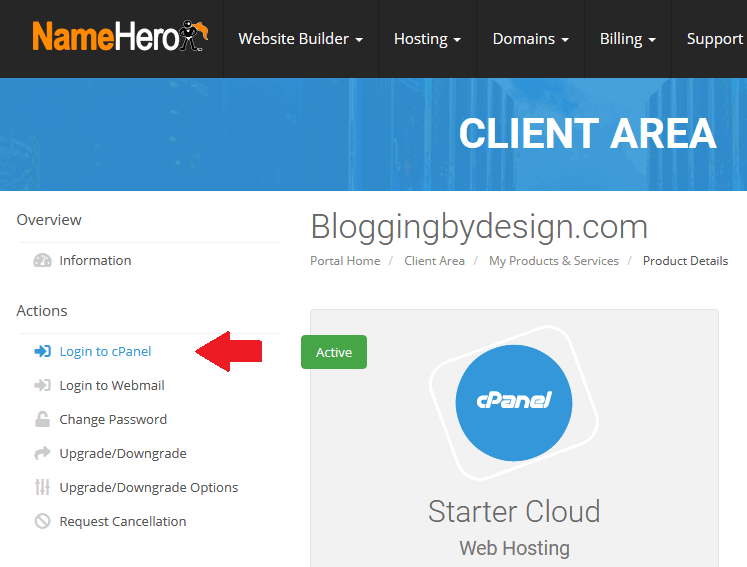
Then you’ll scroll all the way down until you see a button for WordPress
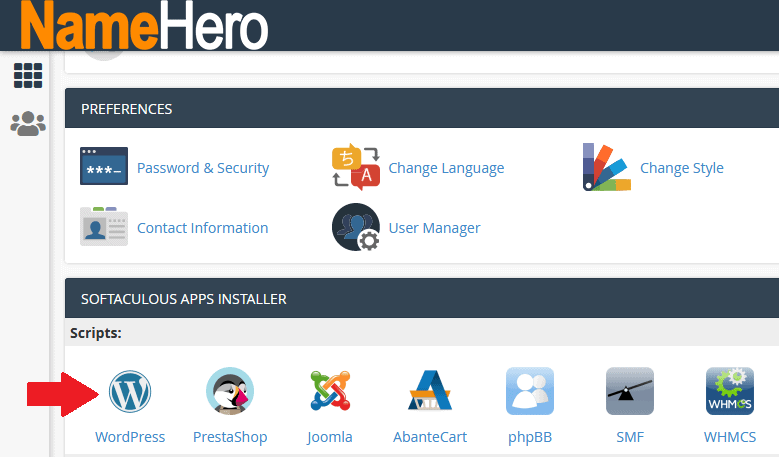
Then you’ll see a button that says Install Now. Click on that, choose the domain/url, change your Admin name and use a strong password.
Next you click Install at the bottom and it will install wordpress.
At this point you might want to watch some Youtube tutorials to get familiar with WordPress. There is no way I could walk you through it with photos. Its going to save you so much time and frustration.
One thing you should do now though is change your Permalinks.
To change your permalinks, go to Settings > Permalink > select Post Name and Save Changes. You do this so the date isn’t in your post urls to keep them short and simple, and you may want to periodically update old posts with fresh content so that old date wouldn’t be relevant.
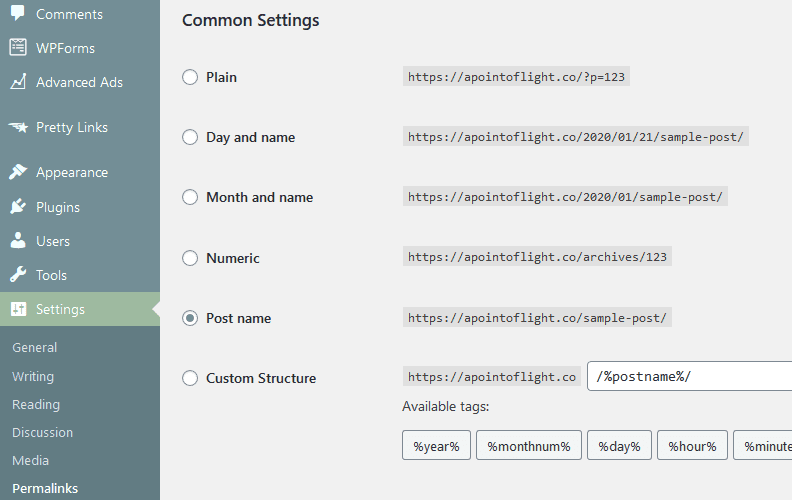
Next choose a theme, I highly recommend you use the free version of Kadence. The speed of your website is really important and Kadence is one of the fastest themes there is. Go to Appearance > Themes and search for Kadence.
Once you install it go to Appearance > Customize to play with the settings.
If you just want a blog feed you don’t really need one, but if you want a custom home page I recommend installing a template just to learn how it’s put together. This may be overwhelming when you’re new to blogging, so you don’t have to worry about making a home page right away.
Kadence has some free templates you can install and customize, and I recommend installing the Kadence Blocks plugin as it will allow you to do a lot more with your website design.
I would also look at Restored 316 themes just to see what you can do. They are pretty pricey, but it you’re patient you can come up with your own version.
Step 5: Create Privacy Policy and Disclaimer Pages
In order to get accepted to affiliate and ad companies you have to have legal pages. That means a Privacy Policy, letting people know how you’ll use their information if you collect emails for a newsletter, and a Disclaimer telling people what companies you work with and how you are compensated — you also need a disclaimer at the top of any post with affiliate links.
This is a really affordable legal page bundle that I used: Plug and Law
You’ll also want to have a Home page, a Contact page for brands and readers to contact you, and an About Me page where readers can get to know you. Go to Pages > Add New. WordPress might already have them so you can edit or delete those.
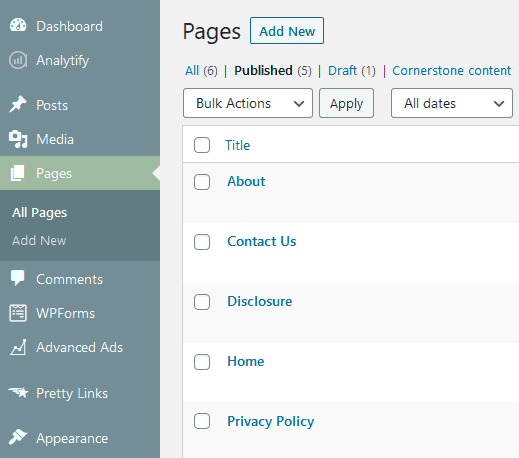
Step 6: Plugins
Plugins add important features to your site both on the front end (what visitors see) and the back end (the WordPress dashboard).
First you’re going to want to uninstall the junk plugins that are automatically installed. You don’t need them and some like Jetpack actually slow down your site.
I, and most other bloggers, recommend the following plugins:
- Insert Headers and Footers – Allows you to insert code or text in the header or footer of your WordPress blog, you’ll need this to connect Pinterest and Google Analytics to your site.
- Cookie Notice – Allows you to inform users that your site uses cookies and helps you comply with the EU GDPR cookie law and CCPA regulations.
- Smush or ShortPixel – Reduce image file sizes, improve performance and boost your SEO
- UpdraftPlus – Backup and restore your content in case something goes wrong.
- W3 Total Cache – Dramatically improve the speed and user experience of your site.
- Wordfence Security – Anti-virus, Firewall and Malware Scan
- Fluent Forms – This adds a contact form to your Contact page in step 5.
- Rank Math – Search Engine Optimization solution for WordPress, including on-page content analysis and XML sitemaps. It also has a direct feature.
Go to Plugins > Add New > type the names into the search bar, then install and activate.
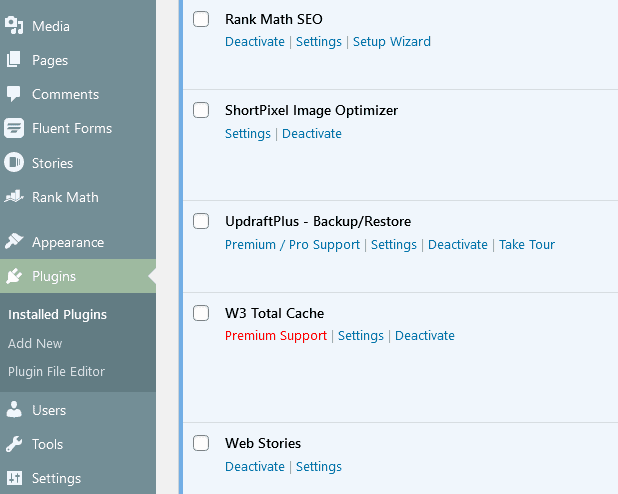
Step 7: Set Up Google Analytics
Google Analytics allows you to see what people are looking at on your site, how they got there, how long they stayed, etc. Once you create an account you can connect it to your website through the Insert Headers and Footers plugin.
Go to analytics.google.com/
Set up your account and copy your tracking code from GA.
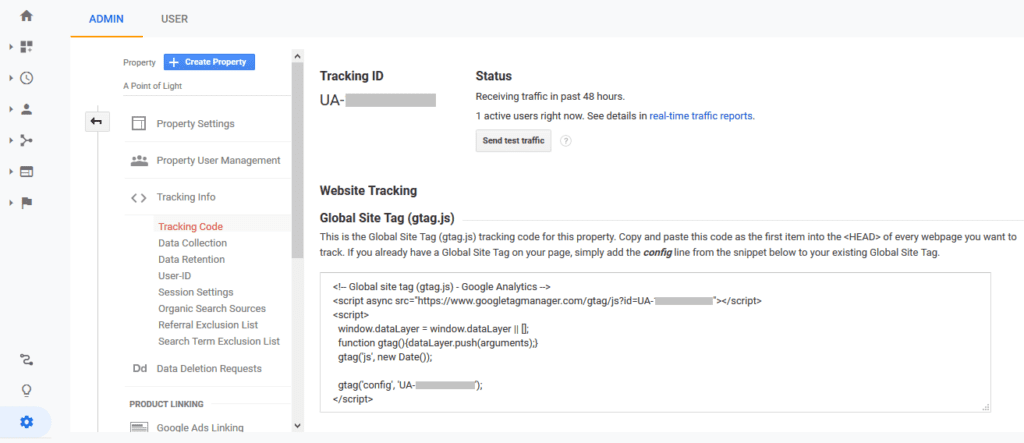
Then go back to WordPress and paste it into the Insert Headers and Footers header box in Settings.
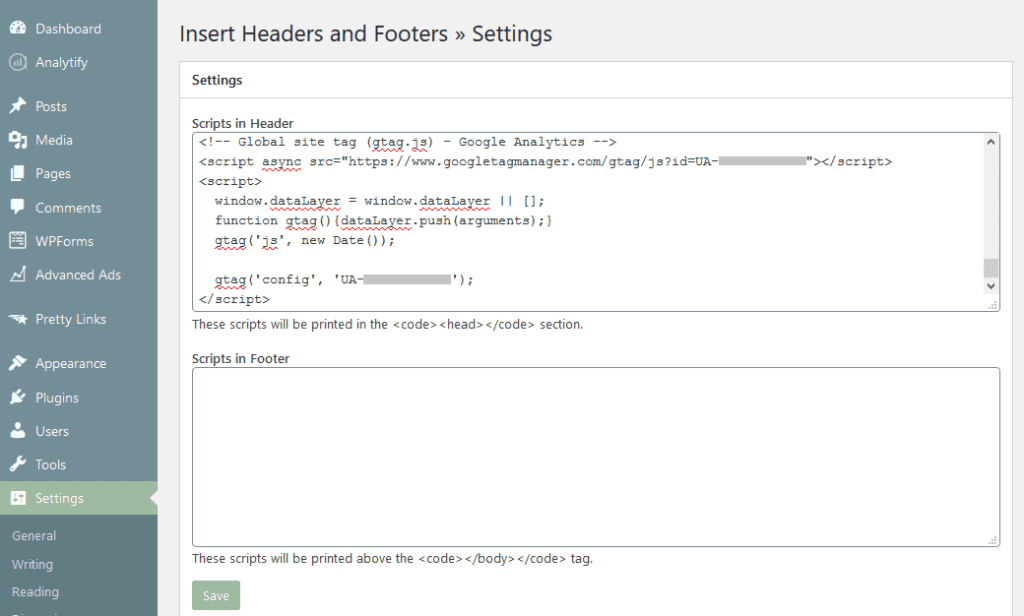
Step 8: Writing Your Posts & SEO
Now that the foundation for your money making blog is set, it’s time to create some content. Before you have people visit your blog you’ll want to have at least 5-10 posts for readers to read.
There are a few really important things to know about what makes a good post.
You want your post to rank high in a Google search so that people actually see and visit your site. There are a couple factors that play into this, it can actually be a little complicated at first but I’ll hit the major points.
Being successful with blogging is all about Search Engine Optimization (SEO). This determines if you’ll get organic traffic from search engines such as Google or Bing.
Google likes posts to have a 1000-2000 word count, so make sure your posts are around that length. Make sure your posts are free of typos and bad spelling. Give plenty of details but don’t be redundant.
However it’s not enough to just write a long post, you want to make sure people will find it and to do that you have to use the right keywords.
Keywords are a few words that tells Google what your post is about. Google picks up phrases that are repeated throughout your post, so if you’re writing about ‘how to bake a chocolate cake,’ you’ll repeat that keyphrase several times in your post, usually in the title (H1 tag), subtitles (H2-H3 tags), in your introduction paragraph, and in your conclusion. Plugins like RankMath will remind you to add your key phrase through the post.
The challenging thing about SEO is that you have to find keywords that people are searching for, but that not too many other websites have already written about. To do this a keyword search tool is essential. I’ve tried a few and the one that is really worth the money is Keysearch. You can get it for about $14 a month with the code KSDISC.
There are similar programs that cost $100 a month so Keysearch is really the best deal you’ll find.
Keyword research is it’s own beast and it can take a while to get the hang of it, I recommend that once you’ve got your site set up you read this post about how to find low competition keywords.
It takes at least 6-12 months for search engine traffic to take off, so you won’t see immediate results but be patient!
Step 9: Promote Your Blog!
Congrats on getting to this point! You’ve done a lot of hard work, and now it’s time to share the fruit of your labors.
Prepare to spend about 20% of your time creating content, and 80% promoting it.
Getting eyes on your blog is a slow and steady process. Unless you already have a large social media following it’s going to take time. Since organic Google traffic takes a few months to kick in, you’ll want to focus on about 2 major social media platforms. That can be Facebook, Instagram, Twitter, and Pinterest. I’ve had the best luck with Facebook and Pinterest but choose whatever you are comfortable with or active in.
Learn how to set up Pinterest and start posting pins that link to your blog posts.
Facebook is really useful because there are blogger share groups where you share other peoples content or visit their site, and they do the same for you.
My favorites are:
At first FB was where I got most of my traffic, but now about 95% comes from Pinterest. I’m still active in all the above groups though.
Step 10: How to Make Money with Your Blog
There are 4 main ways to make money with your blog.
Ads
Ads are one of the most common ways to make cash with your blog, they are tricky though because basically everyone is annoyed by them and yet most sites have them. It’s a personal choice but if you do decide to have ads you want to make sure you don’t have too many, that can make people leave your site.
Some ad companies will take just about anyone as long as you are self hosted, have original (not stolen!) content, and legal pages. These companies pay less, while companies with higher requirements like Mediavine pay better.
Affiliate Programs
Affiliate programs allow you to make a commission by promoting a company’s products or services. It’s a free and easy way to make a passive income. You just want to make sure products you promote are related to your blog topic, and that readers find value in the product.
Common affiliate programs are:
Sell Your Own Products
A great way to earn money is to sell your own products. You can promote an Etsy shop or have a store directly on your site. Digital products like printables, courses, and ebooks are especially great because there aren’t real production costs.
Brand Deals
Once you build an audience you might look into working with brands. You can get paid to promote a product or service. Just remember that you are legally required to disclose all sponsored posts and you’ll want to promote brands that you really trust.
Conclusion
These are the 10 key steps to start a money making blog! I can honestly say it’s been one of the most rewarding things I ever done and every month I see the payoff increasing.
Are you ready to start a new adventure? Get the most affordable hosting with NameHero and build the money making blog of your dreams! I wish you tons of success and fun!
After you’ve set up your blog you’re going to have to learn a few more things. Don’t try to do it in one day! Give yourself at least a week to really learn the basics. I have all the resources you need below.

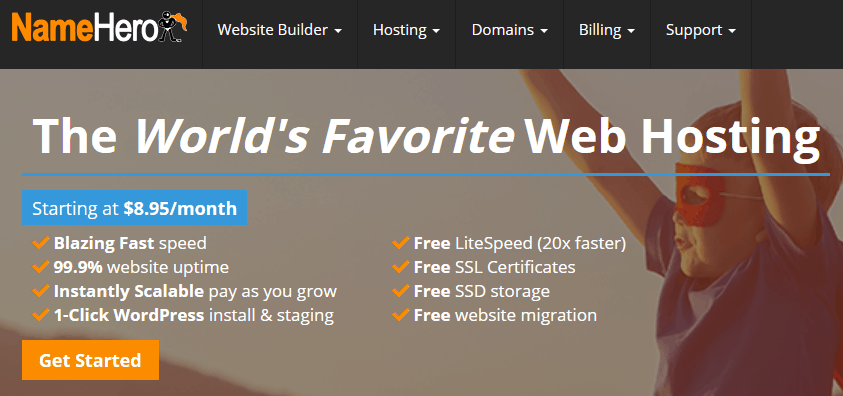




Hey, Katrina just wanted to say what an amazing job with your blog. I’m a beginner trying to become established, and trying to set the foundation for building a website. I wont to say that this post has guided me in the right direction. This post has everything a blogger could possibly need to go ahead and give it a go. It’s well organized and well written. I enjoyed reading “THE ULTIMATE GUIDE TO STARTING A MONEY MAKING BLOG IN 10 STEPS”. Thank you!
Every major player in the blogshpere always mention bluehost and it seems to be the biggest hosting company out there and i will be migrating to bluehost soon…
Much obliged to you! This is so useful. As another blogger, I have been battling with sorting out how blog lawfully and this article helped clear things up. I checked our TermsFeed and plan to utilize it presently to set up my disclaimer page. Much obliged once more
Great post!
I’m glad to see someone promoting a different hosting other than Bluehost lol. Bluehost should be at the bottom of the list. I’ve heard of NameHero but have yet to look into it.
Great job on the blog. Simple and clean design is the way to go. It’s load pretty fast too.
Been working on my blog for several years; but really need a refresh, makeover and some new tips. Very helpful article that was not bogged down with unnecessary chatter – Thank you!